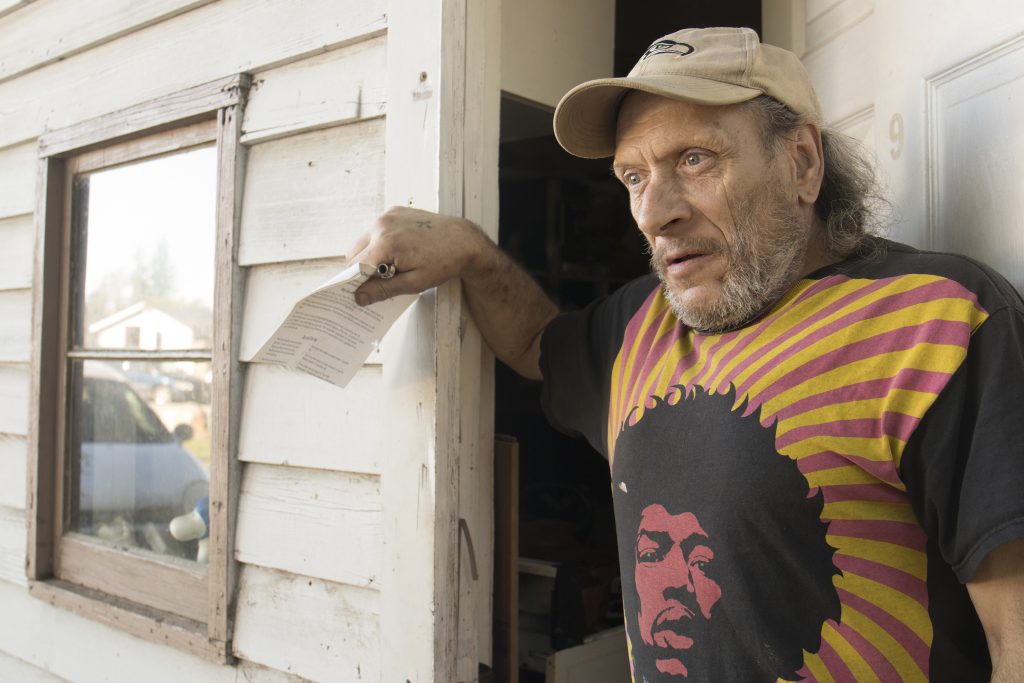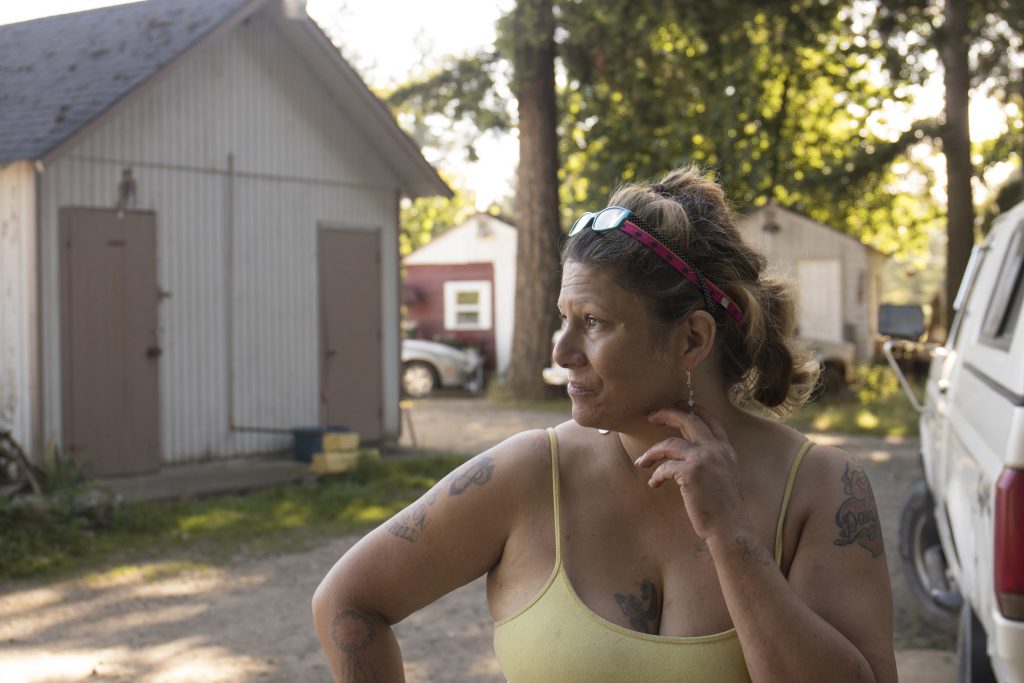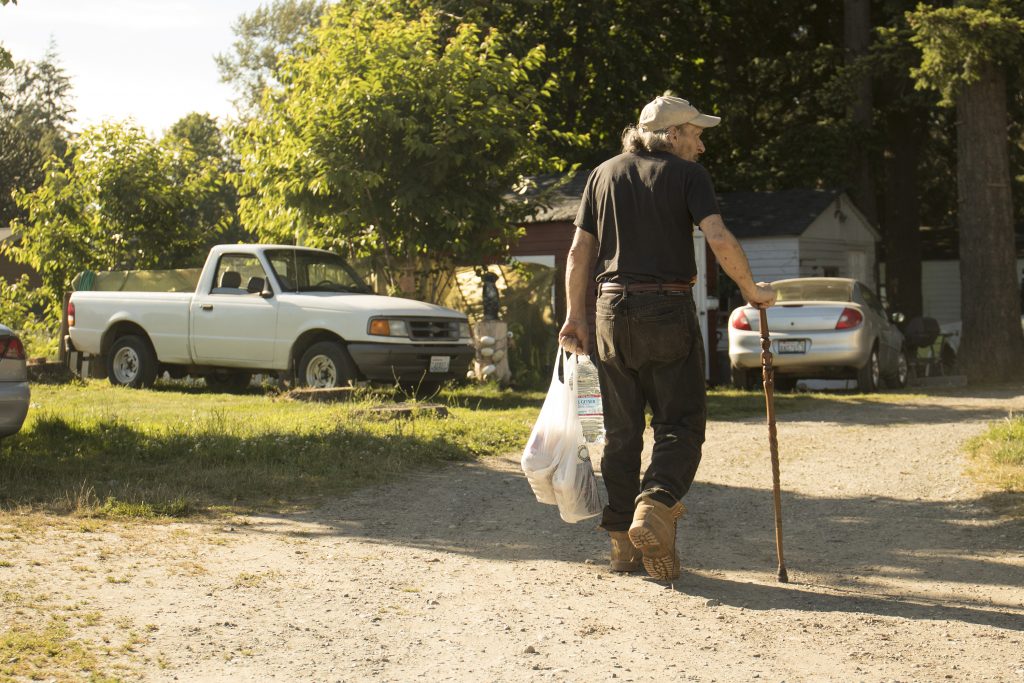Small Washington community grapples with legacy contamination

Kip Sauve, 59, stands in front of his cabin holding one of the notices he was given not to drink his water. He lives in the Kontree Apartments in Lynden, Wash. (Photo by Nicole Tyau/News21)
LYNDEN, Wash. – Kip Sauve has lived at the Kontree Apartments in Lynden, Washington, for two years. He won’t drink the water from the tap. And he won’t let his pet cat and bird drink it, either.
For more than a year, the residents of the complex have periodically received “do not drink” advisories after authorities found excessive levels of the pesticide dinoseb and nitrates in their community’s well water.
Still, Sauve enjoys the small garden in his backyard: “I got peas, beans, radishes, corn, lettuce, sweet lettuce, beans, peas, carrots. I got potatoes.”
The area is known for its crops, especially its blueberry, raspberry and strawberry farms. The farming may have contributed to the water issues facing Sauve’s small community.
The EPA banned dinoseb, an herbicide widely used to control weeds, in 1986. However, it’s an example of legacy contamination, a term used to describe pollution from the past that still lingers in the environment today. It’s often difficult, expensive or sometimes impossible to clean up the contamination.
That means the residents of the Kontree Apartments – and others across the nation who must deal with legacy contaminants – often have few options when trying to clean up their water.
The apartments are a cluster of old migrant worker quarters marketed as cabins. Sauve said when he first moved to the community, he began having abdominal pains after drinking coffee in the morning at a friend’s house.
“I said, ‘What the hell?’” Sauve said. “And he told me, ‘Yeah, it’s the water.’ So ever since that I buy my own water.”
Though Sauve can’t drive, he said he makes his way to the store to buy at least 15 gallon jugs of water each month. He wishes he could live somewhere else, but he can’t afford to because he lives off disability checks.

Christina Hayden lives at Kontree Apartments, but she didn’t know about the “do not drink” alert posted by the Washington State Department of Health. (Photo by Nicole Tyau/News21)
Resident Christina Hayden said she was never informed of the contamination.
Hayden moved to Kontree in April 2017. She said she’s friends with 19 residents who live there, and no one trusts the water.
Derek Pell, a planning and engineering manager for the Washington Department of Health’s Northwest Office of Drinking Water, said the contamination is likely the result of a spill that still manifests in the water supply. He said that while the levels have gone down, they are still above the maximum contaminant level.
To Pell, the solution is simple: Connect to Lynden’s water. Various local departments have worked to get Kontree hooked up to that water line, but progress has been slow because of a water-rights issue with a nearby community.
Even if Kontree can hook up to the municipal line, Pell said it might mean a higher utility cost for the residents such as Sauve who live off disability or welfare income.
“Our priority is we want those folks to have safe and reliable water,” Pell said. “When that water isn’t safe, we make sure people know how to protect themselves.”

Kip Sauve, 59, buys at least 15 gallons of water every month for himself and his pet cat and bird. He doesn’t trust the water that comes out of his faucet in Lynden, Wash. (Photo by Nicole Tyau/News21)
News21 reporter Jackie Wang contributed to this article.
To see the full News21 report on “Troubled Water,” go to troubledwater.news21.com on Aug. 14.